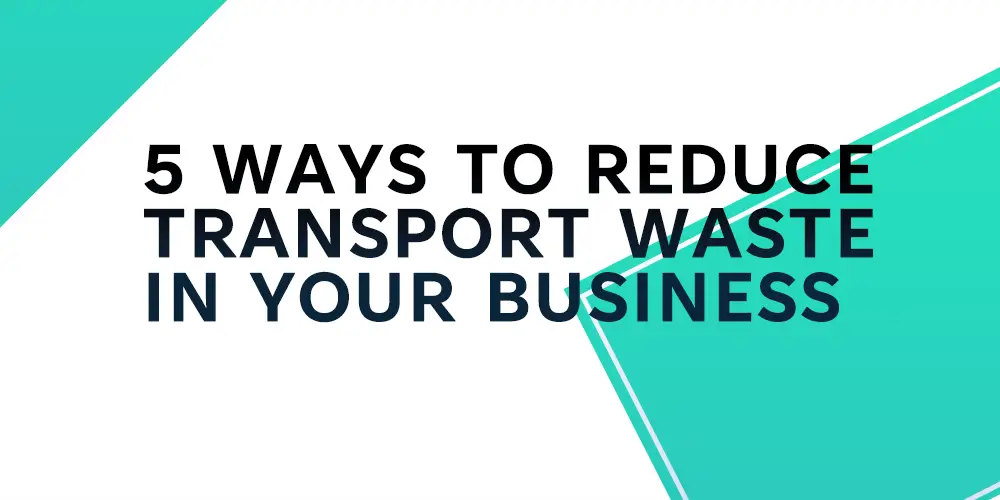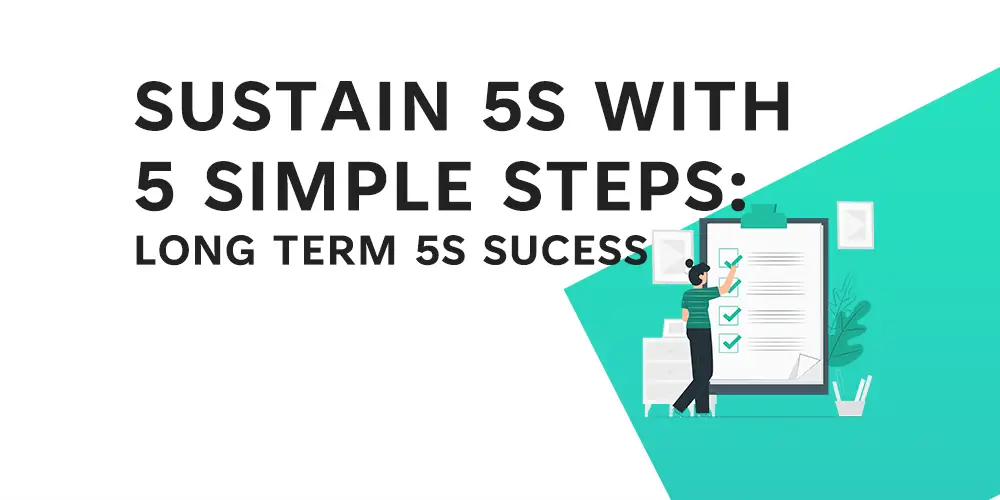Table of Contents
Transport waste can be a substantial financial and environmental drain on a company’s resources.
Transport waste may have a significant influence on a company’s bottom line and sustainability, from the cost of fuel and labour required to carry goods and products to the environmental impact of unneeded shipments and deliveries.
This blog article will look at five methods that organisations can reduce transport waste in their operations. Businesses can not only save money and minimise their environmental effect by employing these tactics, but they can also increase their efficiency and competitiveness in the marketplace.
These tactics can help you reduce transportation waste and support sustainable growth, whether you’re a small business owner or a management at a major corporation.
If you want to learn how to reduce other types of waste in your business check out our: 8 Wastes Article
Tips to reduce transport waste
Tip 1 – Consolidating Shipments and deliveries
Consolidating shipments and deliveries is a simple and practical approach for your company to cut transportation waste. Combining numerous shipments or deliveries into a single journey allows you to reduce the number of cars and drivers required, saving money on transportation and reducing your environmental impact.
Depending on your company’s demands and resources, there are many ways to condense shipments and deliveries. One option is to hire a third-party logistics company (3PL) to handle shipment consolidation and routing. 3PLs have the knowledge and resources to optimise the movement of your goods and products, which can help to reduce transportation waste and expenses.
Another approach is to employ consolidation centres or hubs, which allow many shipments to be aggregated and then routed to their final destinations. This is especially useful for firms that ship a big volume of goods since it allows them to optimise the usage of their transportation vehicles and reduce the number of trips required.
Businesses can save money, minimise their environmental effect, and increase their efficiency by streamlining shipments and deliveries. It’s a simple and practical strategy to eliminate transport waste and promote long-term growth.
Tip 2 – Transportation Optimization
Another important strategy for decreasing transport waste in your organisation is to choose the most efficient transportation options. By choosing the most appropriate mode of transportation for each cargo or delivery, you may reduce the quantity of gasoline and other resources needed, lowering your expenses and impact on the environment.
When determining the most efficient mode of transportation, several criteria must be considered, including the distance to be travelled, the type and size of the items being carried, and the desired speed of delivery. Using a smaller vehicle for a local delivery, for example, may be more efficient than using a larger truck because it will use less fuel and emit fewer pollutants. Similarly, for long-distance or high-volume goods, a more efficient form of transportation, such as rail or sea freight, may be preferable.
Businesses can reduce transportation waste and increase sustainability by carefully researching the most efficient transportation solutions for each shipment or delivery. It’s an important technique to consider if you want to reduce the environmental impact of your business.
Tip 3 – Optimizing Routes and Schedules
Another efficient strategy to reduce transportation waste in your organisation is to optimise routes and schedules. By arranging routes and delivery schedules ahead of time, you can avoid unnecessary detours or delays, saving fuel and other resources. This is especially crucial for organisations that make many deliveries or shipments each day, as even minor improvements can mount up over time.
Depending on your company’s demands and resources, there are several approaches to optimise routes and schedules. Manual planning methods, such as a map and a calculator, are one alternative for determining the most effective routes and schedules. This is a time-consuming operation, but it is useful for firms with a small number of deliveries or shipments.
Another approach is to employ route optimization software, which can automatically determine the most efficient routes and timetables depending on variables like distance, traffic, and delivery times. Route optimization software can enable firms with large fleets or complex delivery schedules to improve operations and eliminate transportation waste.
Businesses can save money, minimise their environmental effect, and increase their efficiency by optimising their routes and schedules. It’s a crucial tactic to consider when attempting to reduce transportation waste and promote long-term growth.
Tip 4 – Just-In-Time (JIT) Delivery Systems
Implementing just-in-time (JIT) delivery solutions is another excellent technique to cut transportation waste in your company. JIT delivery systems entail sending products or supplies to a location only when they are needed, rather than stockpiling excess inventory. This can help to reduce transportation waste by avoiding unnecessary trips to deliver surplus inventory.
JIT delivery systems can be especially beneficial for companies that require a consistent supply of raw materials or components to keep their operations functioning. Businesses can cut storage and handling costs while also reducing the danger of inventory becoming obsolete by simply ordering and receiving the components required for production.
Depending on your company’s needs and resources, there are numerous approaches to creating a JIT delivery system. One approach is to employ a vendor-managed inventory (VMI) system, in which the supplier manages the inventory at the customer’s location. This is especially beneficial for firms with complex or fluctuating demand patterns since it allows them to focus on their core skills while the supplier handles delivery logistics.
Another option is to employ a just-in-time manufacturing system, in which materials and components are delivered to the production line just when they are required. By avoiding the need for superfluous material handling and storage, can help to cut inventory costs and enhance efficiency.
Businesses can eliminate transportation waste, lower expenses, and enhance efficiency by establishing a JIT delivery system. It’s an important technique to consider if you want to reduce the environmental impact of your business.
Tip 5 – Utilize Technology to track and optimize transport processes
Using technology to track and enhance transportation processes is a critical technique for decreasing transportation waste in your company. Businesses can acquire a more precise and real-time understanding of their transportation processes by employing tools such as GPS tracking and transportation management systems (TMS), which can help to discover inefficiencies and areas for development.
Businesses can use GPS monitoring to follow the location and movement of their transport trucks in real-time, which can help improve routing and scheduling while also lowering fuel consumption and emissions. It can also help to improve customer service by providing precise delivery schedules and delayed alerts.
Transportation management systems (TMS) are software platforms that assist organisations in planning, optimising, and carrying out transportation operations. By offering real-time visibility and tracking of shipments, TMS can help to streamline the movement of goods, cut transportation costs, and improve customer service.
Businesses may decrease transportation waste, lower expenses, and enhance efficiency by using technology to track and optimise transportation processes. It’s an important technique to consider if you want to reduce the environmental impact of your business.
Conclusion
Finally, transportation waste can have a substantial influence on a company’s bottom line and long-term viability. Businesses can reduce transport waste, save money, and reduce their environmental impact by implementing strategies such as consolidating shipments and deliveries, using the most efficient transportation methods, optimising routes and schedules, implementing just-in-time delivery systems, and utilising technology to track and optimise transport processes.
These tactics can help firms run more efficiently, provide better customer service, and drive long-term growth. Whether you are a small business owner or a manager at a major firm, it is critical to explore these strategies to reduce transportation waste and support long-term success.








